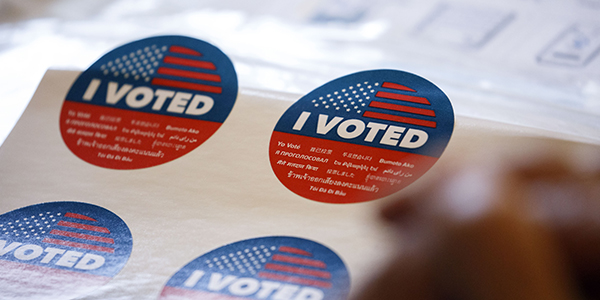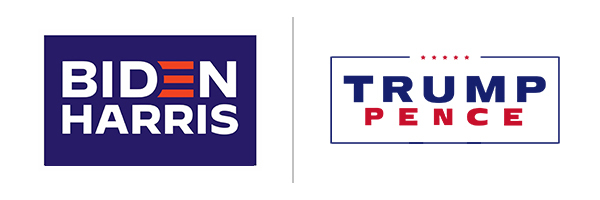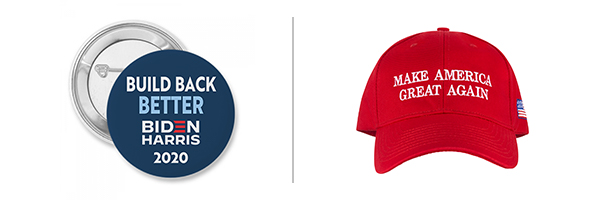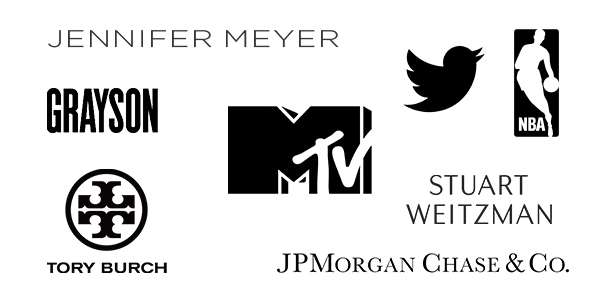
There was much to keep our attention during this election season. As a result, I found my professional role as a brand strategist inserting itself into my personal role as a voter. My natural tendency was to glean where I saw brand concepts playing a key role – in our perceptions of the candidates, their platforms and the multitude of consumer businesses that chose to get involved.
Personality drove brand perceptions
A strong brand positioning integrates both positioning attributes and personality attributes. Shorthanded, positioning integrates both what you say as well as how you say it or the tone of voice. This construct was evident by both candidates’ positioning, whether by intention or by perception. In addition to their differing policy viewpoints, which in large part, define what they say or what they stand for, President Trump and President-elect Biden have distinctly different personalities. While some of that personality is an extension of their party’s platform, much of it is inherent to who they are or who they chose to appear as to the electorate.

This difference in personality became highly relevant as the election became about identity over policy. Their identities (or personalities) defined the brand of each candidate.
Trump’s core supporters see him as aggressive, a bold outsider to the system, and fighting the good fight. His detractors see him as self-serving, dishonest and reckless. Biden’s voters see him as “not Trump.” His active supporters also define him as authentic, experienced, a stalwart (having gracefully persevered through a lifetime of tragedies) and sincere. His detractors see him as an entrenched insider, outdated and weak. The narrative for this election was essentially cast as a good versus evil storyline. Which candidate was good and which was evil was defined by how you perceived their personality, and thus, their brand.

Platforms defined campaign slogans
For each candidate, multiple slogans were used at varying points over the campaign. Trump brought forward his ubiquitous 2016 campaign theme, “Make America Great Again,” as well as others such as “Law and Order” and “Promises Made, Promises Kept.”
Biden launched with a “Battle for the Soul of the Nation,” later introduced “Build Back Better” at the Democratic National Convention and complemented with other ideas, including “Unite for a Better America” and “Our Best Days Still Lie Ahead.”
For me “Make America Great Again” rose to the top as the core reflection of what Trump’s campaign stood for in the eyes of its supporters. Biden’s slogans were less sticky and no one slogan seemed to identify the campaign.
Reflecting back to what defines a brand positioning, these slogans are a distillation of “what you say.” In essence, they serve the same role as a tagline.
A tagline is an external expression of an internal brand positioning. It can serve as a rallying cry for employees or in this instance, for supporters. It offers a compelling shorthand for the positioning, and if done well, is concise, memorable, relevant and differentiating.
Whether or not you agree with the position that underlies these slogans (taglines), most are objectively successful from a brand standpoint. “Make America Great Again” is deeply embedded in the Trump ethos. It emotionally ties the campaign to its supporters. It’s memorable. And it certainly became a rallying cry. That said, I do question the use of the same tagline after four years in office. It seemed like an evolution to “Keep America Great” was attempted, but didn’t stick. This in itself reinforces the strength of the original tagline.
For Biden, “Battle for the Soul of the Nation” was his best effort at creating a powerful emotional connection. “Build Back Better” never attracted quite the same level of emotion, but structurally, its memorability is enhanced by the alliteration. And tactically, it was tied to every Biden proposal from jobs and economic recovery to racial equity and pandemic policy. Its strength was in its consistency at all levels of campaign messaging, exactly how a positioning statement and its shorthand tagline should be implemented.
Corporate voices demanded to be heard
From large consumer companies to financial institutions, many brands attempted to turn votes into marketing. Boosting voter turnout, encouraging voter registration, aligning with specific candidates – many companies attempted to accomplish at least one of these objectives, often times while simultaneously selling product. Like no other election I recall in my lifetime, the number of companies and corporations demanding to have a voice in the election was near immeasurable. According to a recent article in Fortune, “over 2,200 companies stepped up their civic responsibility efforts, embracing their power to drive increased voter participation.”
And yet, such action risks alienating a large percentage of buyers and users. Seemingly, it was a risk many companies were willing to take this election. In our article entitled, “Five ideas to help brands make an impact” we spoke about the importance of speaking out and leading society forward in a way that is authentic and true to their brand platforms. I’d argue that many companies took that advice when considering their election-related outreach.

For Gen Xers (like me) the first corporate election initiative that comes to mind is likely MTV’s long-standing “Rock the vote” partnership. For 30 years, MTV has been partnering and funding this high-level initiative to encourage voter registration. It is impossible to separate MTV from the program, as it’s become an authentic part of what the company stands for.
This year sports leagues, most especially the NBA and its players, complemented MTV’s work with initiatives to encourage voter registration and enable voting in their stadiums. A natural outcome of players’ outspokenness and powerful actions in support of Black Lives Matter and in direct response to the shooting of Jacob Blake in Kenosha, these get-out-the-vote initiatives seemed natural and authentic. And more than any other sport, the NBA players’ voices combined and elevated to the league level.
Other companies got involved by giving employees time off to vote. JPMorgan Chase, Coca Cola and Twitter, among others, ensured that at least one of the boundaries that prevents people from voting was removed. It’s an action that demonstrated leadership, I believe, in hopes that others – and perhaps the federal government – will follow.
And in yet another effort that one might cynically describe as less generous and more aimed at selling product, many fashion companies united behind the “I am a voter” campaign by offering for purchase a mix of approachable and high-end products featuring the slogan. The outreach is defined as a “public awareness campaign that aims to create a cultural shift around voting and civic engagement by unifying around a central truth: that our democracy works best when we all participate.” Bringing together fashion and social media with designs from the likes of Stuart Weitzman, Jennifer Meyer, Tory Burch and Grayson, ensured the importance of voting was emblazoned on celebrities, influencers and everyday folk across the country. If nothing else, awareness was raised.
Perhaps this election was unlike any other. And it looks like it may continue to be. As you tire from the rhetoric, distract yourself like I do, by finding where brand is playing a role.
